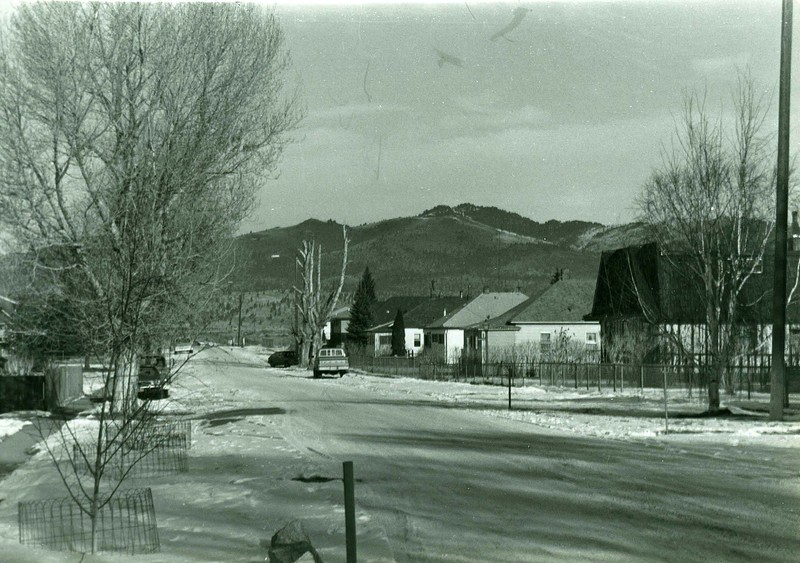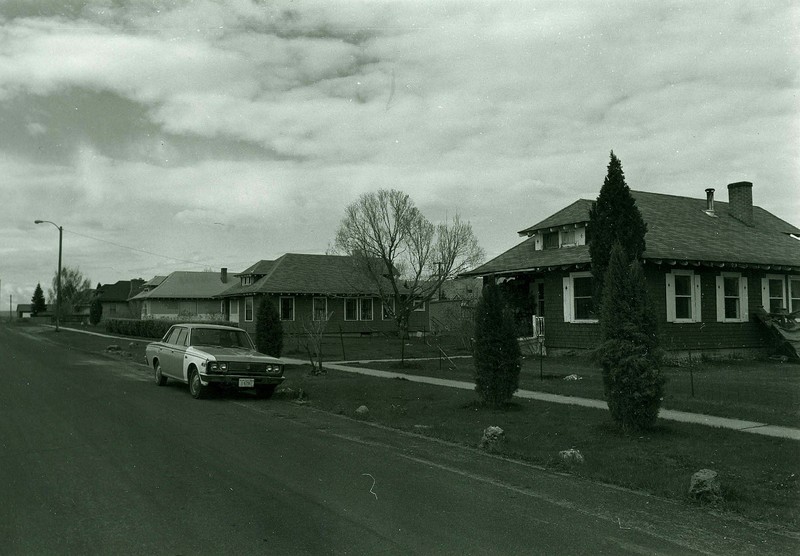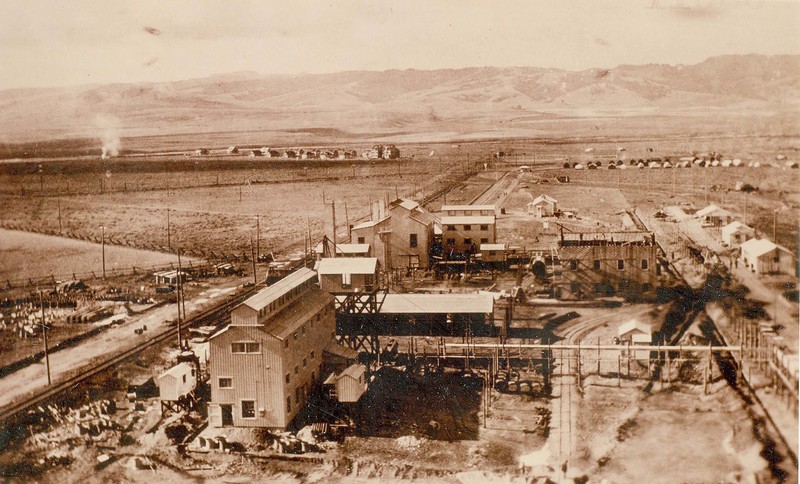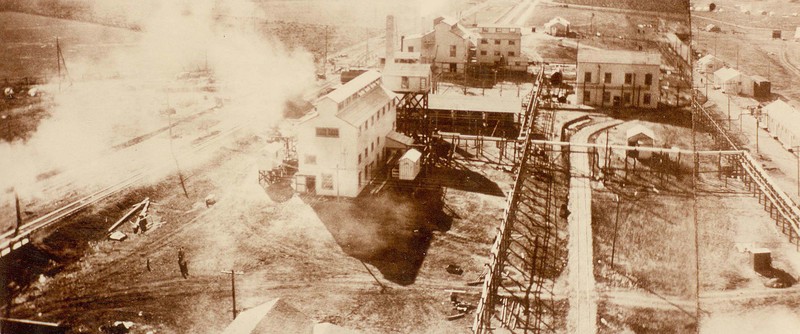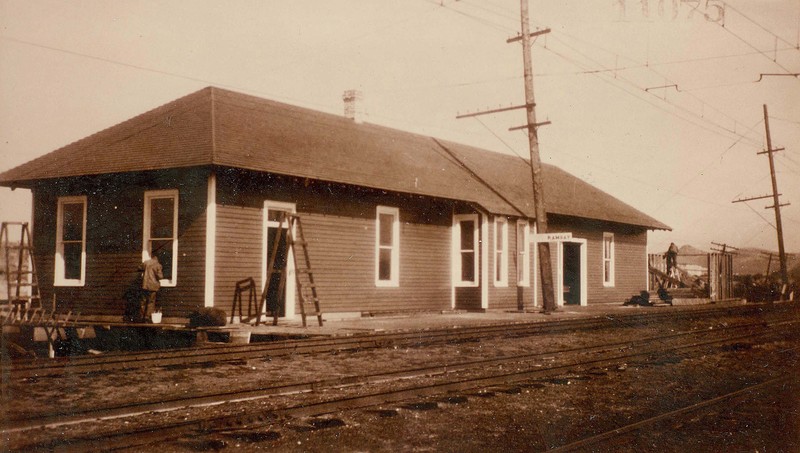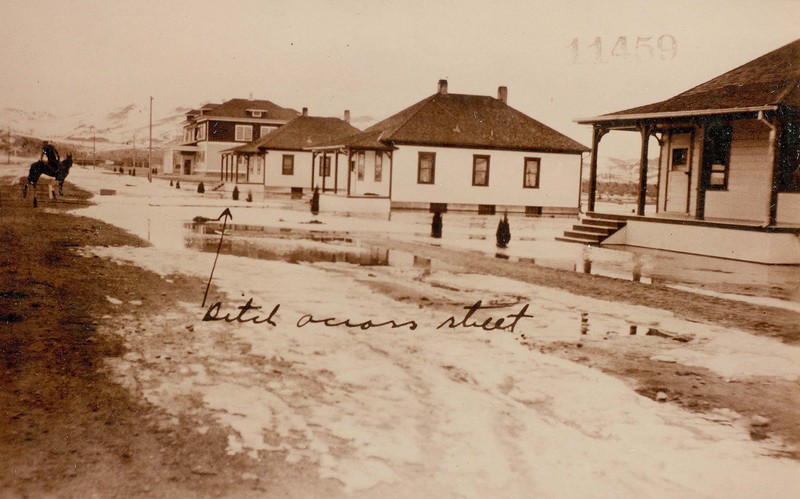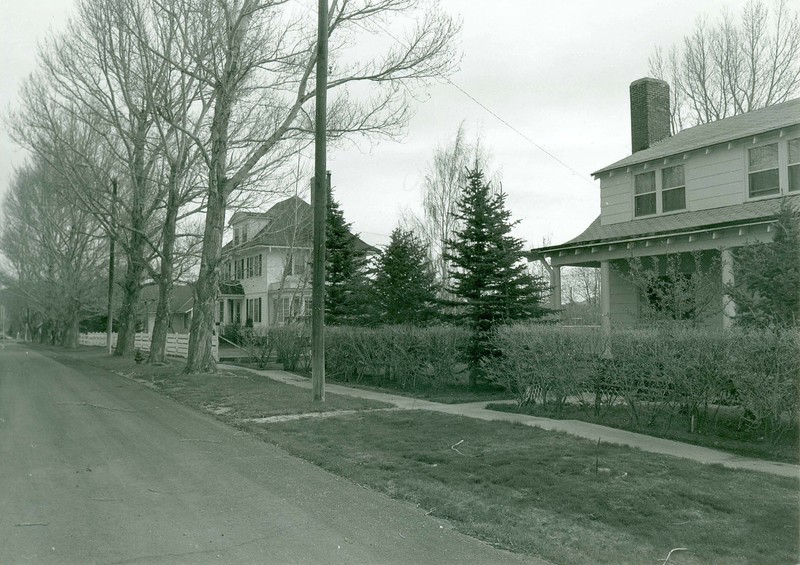
World War I (1914-1918) created an insatiable demand for copper, a primary component in warships, ammunition casing, and tanks. Since copper mining required explosives, in 1916 the DuPont Company decided to locate a dynamite manufacturing plant seven miles from Butte, home to rich copper mines. DuPont built the company town of Ramsay to attract workers to the isolated plant, which could produce 750,000 tons of dynamite a month. It situated Ramsay near the railroad, but far enough from Butte that an explosion—always a risk in a dynamite plant—would not affect the larger community. Believing that better living conditions resulted in greater worker efficiency, DuPont created a pleasant town with good infrastructure. Along wide, tree-lined streets the company built a large boarding house for single workers, attractive bungalows for married workers, and three large residences for company managers. The homes mainly followed three standard architectural designs, named after other DuPont company towns. Most common were the hipped-roof “DuPont-style” cottages, with a front hipped-roof dormer and small cutaway porches. The company also constructed six gable-roofed “Hopewell-style” cottages, with shed dormers and decorative shutters, and three smaller hipped-roof “Louviers-style” cottages. Demand for dynamite dropped precipitously after the war and DuPont closed the Ramsay plant in 1921. Throughout the 1920s, only three to four families lived in Ramsay. During the Great Depression, DuPont opened houses for non-company tenants. In the 1940s, DuPont sold the entire town to a former employee, who improved the houses and resold them to private buyers, transforming the company town into a Butte suburb.
Images

